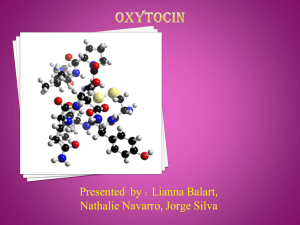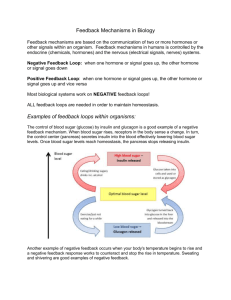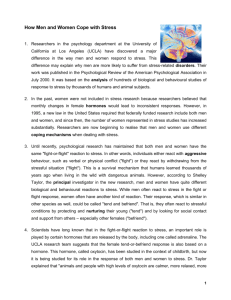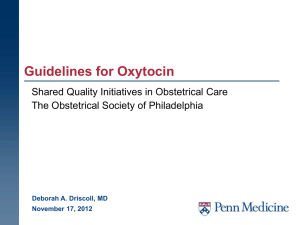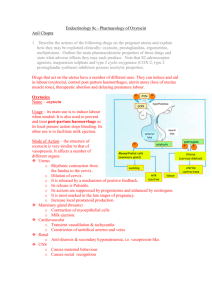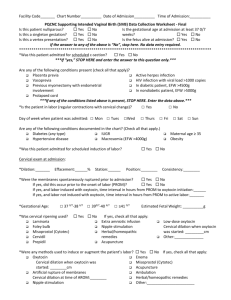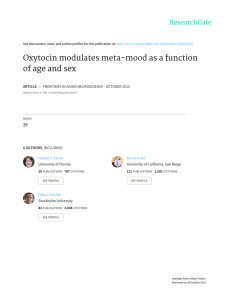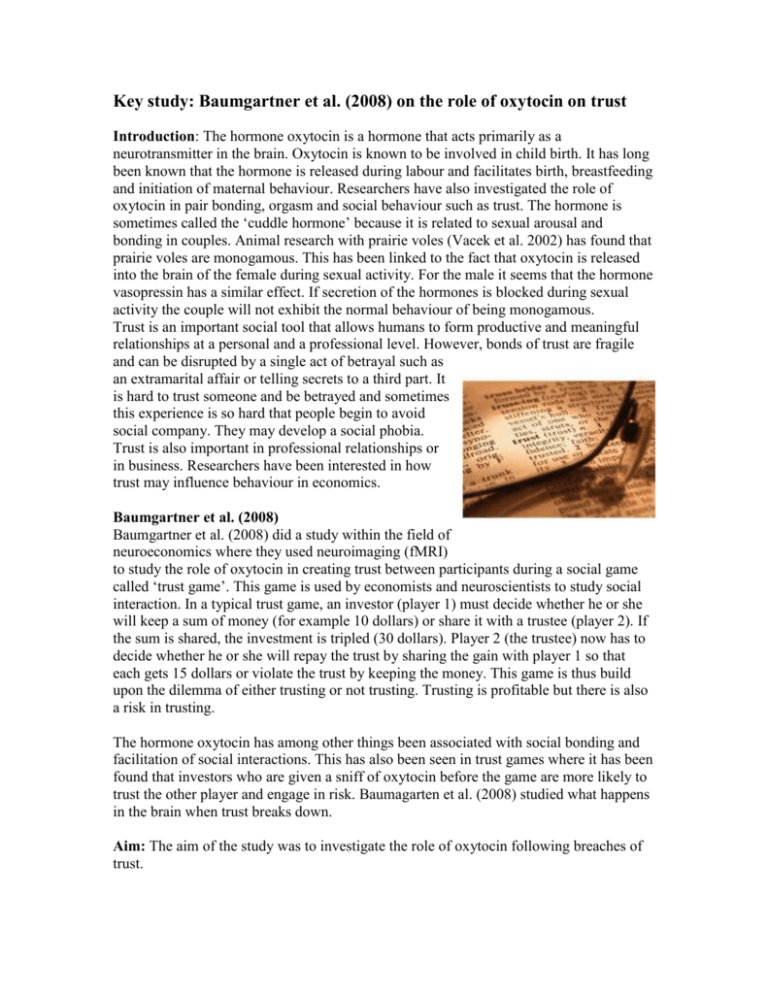
Key study: Baumgartner et al. (2008) on the role of oxytocin on trust
Introduction: The hormone oxytocin is a hormone that acts primarily as a
neurotransmitter in the brain. Oxytocin is known to be involved in child birth. It has long
been known that the hormone is released during labour and facilitates birth, breastfeeding
and initiation of maternal behaviour. Researchers have also investigated the role of
oxytocin in pair bonding, orgasm and social behaviour such as trust. The hormone is
sometimes called the ‘cuddle hormone’ because it is related to sexual arousal and
bonding in couples. Animal research with prairie voles (Vacek et al. 2002) has found that
prairie voles are monogamous. This has been linked to the fact that oxytocin is released
into the brain of the female during sexual activity. For the male it seems that the hormone
vasopressin has a similar effect. If secretion of the hormones is blocked during sexual
activity the couple will not exhibit the normal behaviour of being monogamous.
Trust is an important social tool that allows humans to form productive and meaningful
relationships at a personal and a professional level. However, bonds of trust are fragile
and can be disrupted by a single act of betrayal such as
an extramarital affair or telling secrets to a third part. It
is hard to trust someone and be betrayed and sometimes
this experience is so hard that people begin to avoid
social company. They may develop a social phobia.
Trust is also important in professional relationships or
in business. Researchers have been interested in how
trust may influence behaviour in economics.
Baumgartner et al. (2008)
Baumgartner et al. (2008) did a study within the field of
neuroeconomics where they used neuroimaging (fMRI)
to study the role of oxytocin in creating trust between participants during a social game
called ‘trust game’. This game is used by economists and neuroscientists to study social
interaction. In a typical trust game, an investor (player 1) must decide whether he or she
will keep a sum of money (for example 10 dollars) or share it with a trustee (player 2). If
the sum is shared, the investment is tripled (30 dollars). Player 2 (the trustee) now has to
decide whether he or she will repay the trust by sharing the gain with player 1 so that
each gets 15 dollars or violate the trust by keeping the money. This game is thus build
upon the dilemma of either trusting or not trusting. Trusting is profitable but there is also
a risk in trusting.
The hormone oxytocin has among other things been associated with social bonding and
facilitation of social interactions. This has also been seen in trust games where it has been
found that investors who are given a sniff of oxytocin before the game are more likely to
trust the other player and engage in risk. Baumagarten et al. (2008) studied what happens
in the brain when trust breaks down.
Aim: The aim of the study was to investigate the role of oxytocin following breaches of
trust.
Procedure: This was an experimental study where the researchers used neuroimaging.
First, 49 participants were placed in a fMRI scanner. They received either oxytocin or
placebo via a nasal spray. Participants were
placebo: an inert substance that
then told to act as investors in several rounds
should not influence the biological system.
of a trust game with different trustees. They
were also told that they were to engage in a risk game, which is the same as a trust game
in terms of financial risk but it is played against a computer instead of a human partner.
The participants received feedback from the experimenters. The procedure was divided
into a pre-feedback phase and a post-feedback phase and the feedback was given in
between the two. The feedback given indicated that about 50% of their decisions (in both
kinds of games) resulted in poor investment because their trust was broken.
Results: The researchers saw that the feedback had different results. Participants who
had received a placebo before they started playing were more likely to decrease their rate
of trust after they had been briefed that their trust had been broken. Participants who had
received oxytocin in the nasal spray
continued to invest at similar rates.
Apparently it did not matter to them that their
partner had broken their trust. The
researchers could also see that different brain
areas were active in the two groups.
Participants in the oxytocin group showed
decreases in responses in the amygdala and
caudate nucleus. The amygdala is a structure
in the brain involved in emotional processing
and fear learning. It has many oxytocin
receptors. The caudate nucleus is associated
with learning and memory and its’ role in reward-related responses and learning to trust.
The researchers hypothesized that oxytocin may have a role in decreasing fear reactions
(via the amygdala) that may arise as a consequence of betrayal and our reliance on
positive feedback that can influence future decisions (via caudate nucleus). It seems that
oxytocin may facilitate the expression of trust even after trust has been violated by
potentially lowering defense mechanisms associated with social risk. This seems to
happen by ignoring the negative feedback, which is important for adapting behaviour in
the future. An interesting finding was that the researchers could only observe these
behavioural and neural results when participants played the trust game but not when they
played the risk game against a computer. According to the researchers this suggests that
ocytocin’s effect on trust only comes into play in interactions with real people.
Trust is an important adaptive mechanism, which helps humans to find out how to
navigate among other humans. Humans need to be with other human beings, as there is a
‘need to belong’ but they also need to be careful in terms of trust. Lover levels of
oxytocin are certainly adaptive in some situations in order to protect against potential
harm but it is also important to be able to forgive and forget if long-term relationships
and mental well-being should be preserved.
The results of this study can help understand how mental disorders such as social phobia
may develop. It could be due to an excessive fear of betrayal. However, longterm lack of
social interaction can result in psychological and physiological disorders. Results like
these could indicate that levels of oxytocin play an important role in the consequences of
betrayals that we all have to deal with during life and a further step in research could be
to examine how levels of oxytocin influence real life betrayals. Another field to explore
could be gender differences in responses to betrayal after oxytocin administration.
Based on this article ‘To trust or not to trust’
http://www.scientificamerican.com/article.cfm?id=to-trust-or-not-to-trust

